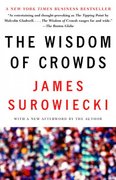Question
do you agree or disagree, why or why not with the below: In a monopilistically competitive market, there are heterogeneous goods that consumers often have
do you agree or disagree, why or why not with the below:
In a monopilistically competitive market, there are heterogeneous goods that consumers often have a preference for which allows them to be price makers. This makes this market more elastic than a monopoly seeing as the consumers have options. This also means that consumers are willing to pay more for a product because they have a preference for a good. There is entry and exit of the market as well which is part of the reason that producers need to be cautious of the prices they charge. Monopolistaclly competitive firms tend to be more efficient in the long run because of this entry and exit.
An oligopolistic market has a much more limited number of producers. This market also has barriers to entry and exit. This causes the producers to keep the prices more in line with the competitors so that they don't lose business. Firms are price makers. The firms in this market often use tacit collusion in order to limit production to enhance their revenue. The Sherman Antitrust Act made it illegal for these firms to communicate about the price levels, so firms often apply price leadership to determine price change. In price leadership, one firm often sets the price first then other firms will often alter their price level in order to maintain market share and maximize revenue. Long-run efficiency is compromised due to tacit collusion.
With a perfectly competitive graph, there are homogeneous products resulting in firms being price takers because they can't differentiate their products. In perfect competition, because demand is perfectly elastic, the demand curve = the marginal revenue curve. In monopolistic competition firms face a highly elastic demand curve with long-run efficiency. The marginal revenue curve falls below the demand curve because they sell a different quantity at different price points which they are able to set as price makers.
In an oligopoly, there is interdependence because the decisions of one firm significantly affect the profits of other firms. The demand for the price is elastic with a price increase on goods. If one producer raises the price others will not follow. However, if a producer lowers the price, the demand is price inelastic because others will follow. This is what causes the kinked demand curve and thus the "broken" marginal revenue curve.
Profits are maximized where MR=MC which is true for all markets. The process does not change for deciding on the optimal price and quantity. Price is determined by drawing a line from where MR=MC up to the demand curve. From this point, a line is drawn over to the price axis to determine what price to charge and down to the quantity axis to determine the quantity. In perfect competition, because the demand curve is also the Marginal Revenue curve, a line does not have to be drawn to the demand curve to determine the price.
Step by Step Solution
There are 3 Steps involved in it
Step: 1

Get Instant Access to Expert-Tailored Solutions
See step-by-step solutions with expert insights and AI powered tools for academic success
Step: 2

Step: 3

Ace Your Homework with AI
Get the answers you need in no time with our AI-driven, step-by-step assistance
Get Started


